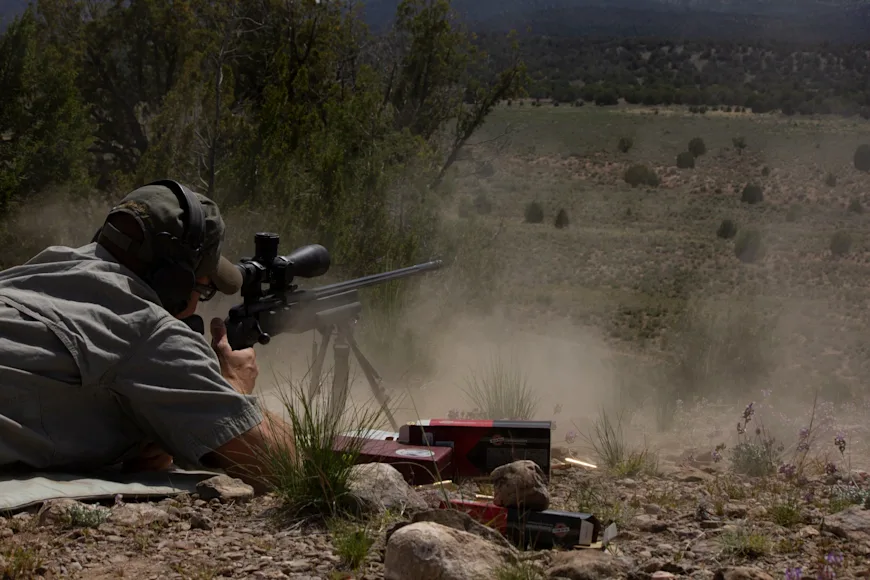_We may earn revenue from the products available on this page and participate in affiliate programs. Learn more ›
_
Parallax is a simple concept to understand, but as it relates to riflescopes it’s difficult to explain. According to Merriam-Webster, parallax is the apparent displacement or the difference in apparent direction of an object as seen from two different points, not on a straight line with the object. I’m sorry, but what the hell does that mean? Let’s see if I can provide a hillbilly translation.
Try This Experiment to Understand Parallax
Hold your cell phone up and look at it with one eye at a time. Notice how everything beyond your phone moves from side to side as you switch eyes. This happens for two reasons. The first is because your eyes are about 2.5 inches apart; each eye looks at the phone from a different position. It also happens because the stuff you see beyond your phone is, well, beyond your phone. Now, lay your phone on a table and do the same thing. Everything still shifts when you switch eyes, but the phone and table shift together because they’re in the same place.
Ok, cool experiment, but what the hell does this have to do with a riflescope? This is where it gets hillbilly simple. Imagine your phone is the reticle in your riflescope and that everything behind your phone is the image—target or animal—you see through the riflescope. When the reticle and the target are not focused in the same place and you move your head a little bit, the reticle will move.
The goal of any rifle shooter then is to get the reticle to stop moving by eliminating parallax—which works just like laying the phone on the table. Focus the reticle and image in the same place, and the reticle will stay still, leading to a more accurate shot on target.
How to Eliminate Parallax in a Rifle Scope
One way to eliminate parallax in a riflescope is to position your eye so that the center of your pupil is perfectly in line with the center of the riflescope. However, that’s almost impossible to do—perfectly—all the time and every time. If your eye is slightly off the centerline, the reticle can point to a different place.
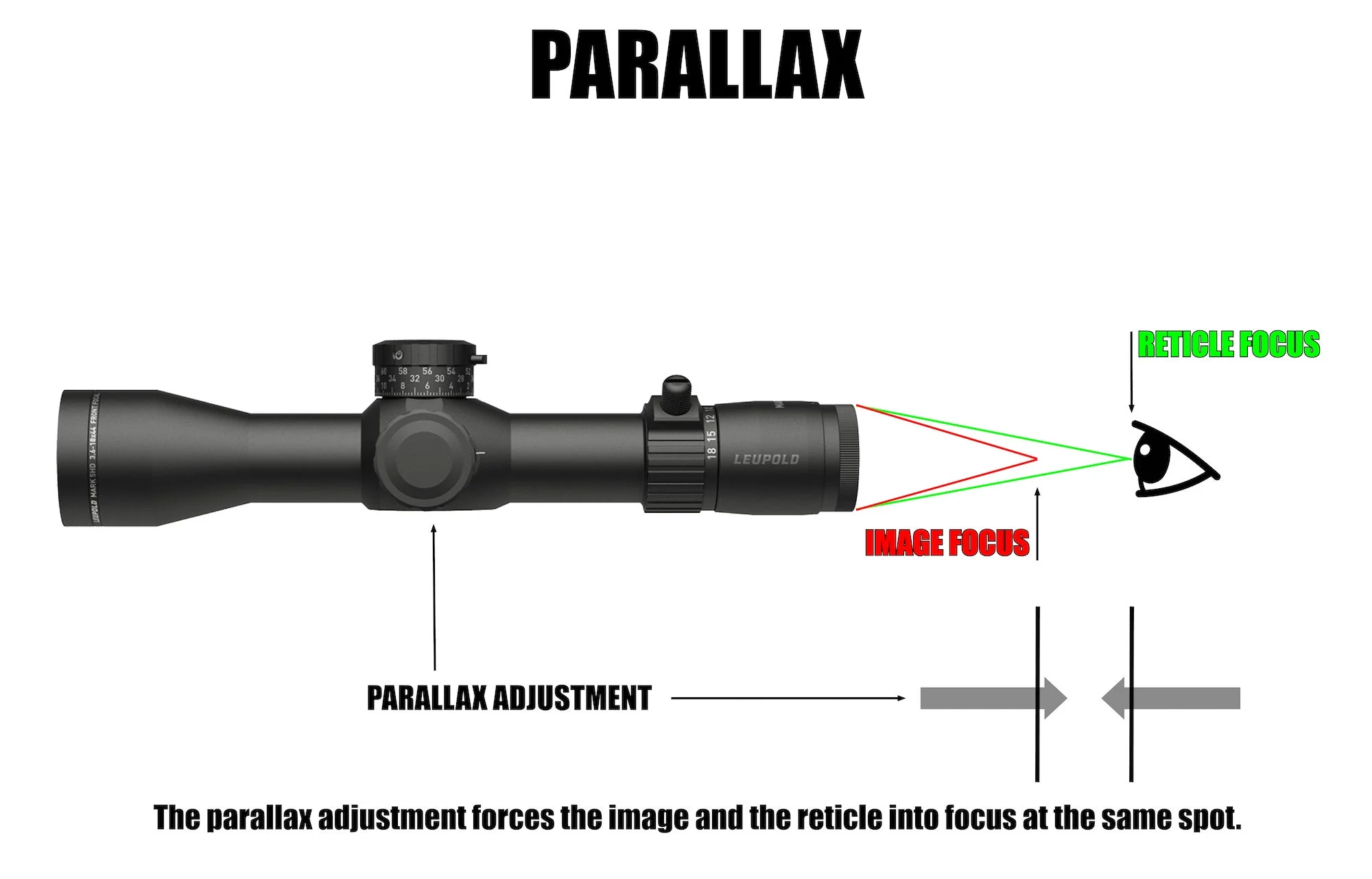
The parallax adjustment on a riflescope simply positions the reticle focus and the image focus at the same spot. Richard Mann
To keep parallax from being a problem, riflescope manufacturers set the parallax at a certain distance or build parallax adjustment into the scope. Riflescopes without a parallax adjustment are generally set to be parallax-free somewhere between 50 and 150 yards. (Fifty yards for rimfire scopes and 150 yards for centerfire scopes.) If you’re shooting at any other distance, there will be parallax. Fortunately, unless you’re shooting at a target that’s very close or very far in relation to that parallax free distance, the amount of parallax is minimal. Also, and this is important, riflescopes with a fixed parallax generally have a deeper depth of focus. But more on that shortly.
With an adjustable parallax riflescope, turning the parallax adjustment moves lenses within the scope to focus the image and the reticle in the same place. Most riflescopes with an adjustable parallax have distance indicators, but they’re not exact because adjusting the diopter focus and magnification also move lenses inside the scope. And atmospheric conditions and light impact this as well. When you adjust the parallax, you’re correcting for all these variables.
How do you know if you’ve effectively eliminated parallax? You simply move your head behind the riflescope (without bumping the rifle) and look for the reticle to move in relation to the target. If it does not move, you’ve eliminated the parallax.
Depth of Focus/Field
I said this is important and here’s why. Let’s start by thinking about binoculars. With some binoculars, you can look at objects at 100 yards and at 125 yards, and both appear in focus. That’s because the binocular has a deep depth of focus. With others, you may have to adjust the focus, even when the distance to the image changes by only 5 yards. Those binoculars have a narrow depth of focus.
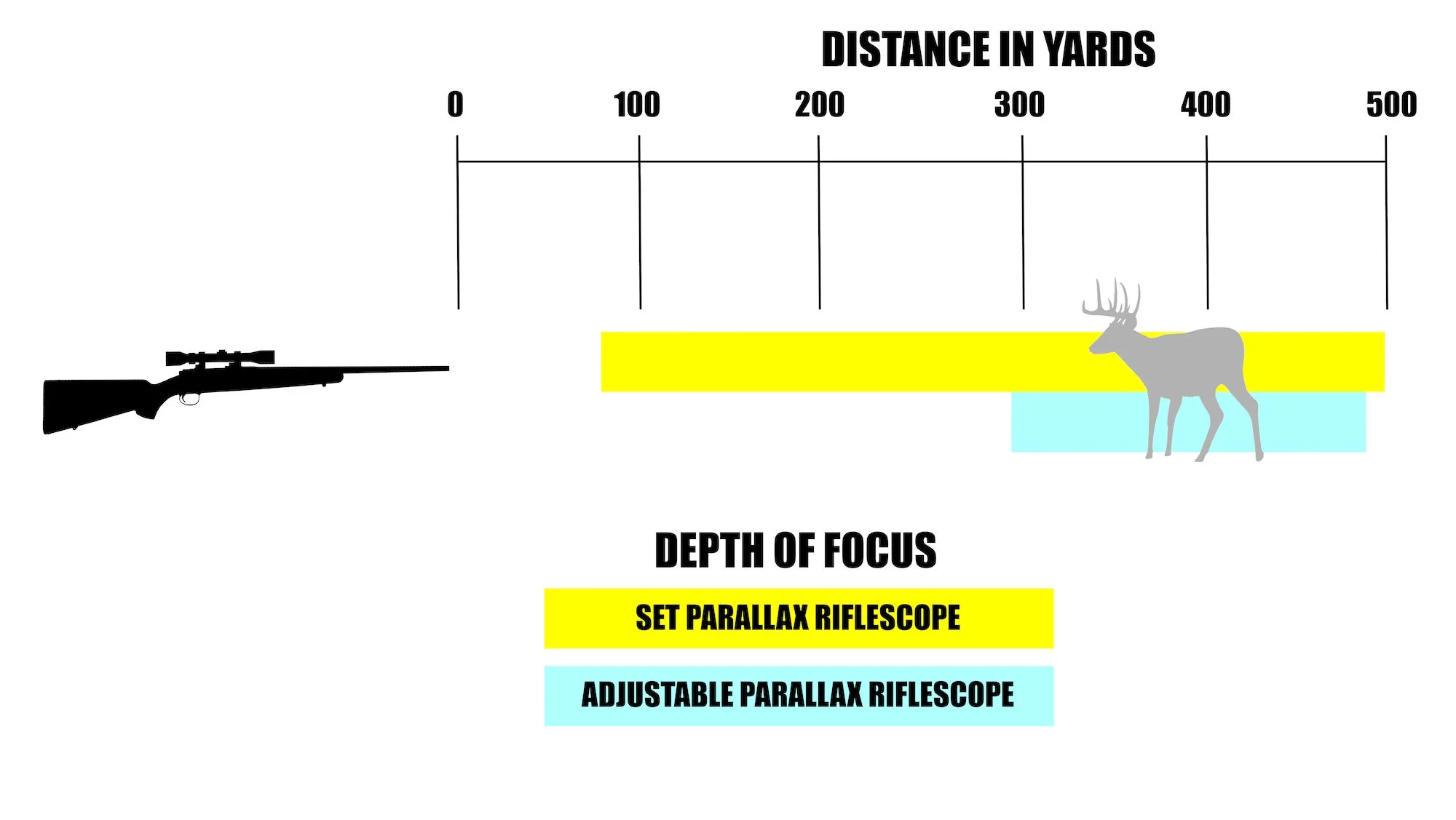
Riflescopes with a parallax adjustment also adjust the position of the scope’s depth of field. Richard Mann
Though a parallax adjustment knob is sometimes referred to as a focus, that’s not its purpose. However, because of how adjustable parallax riflescopes are made, they have a narrow depth of focus because the parallax adjustment needs to make extremely fine lens movements within the riflescope. Because of this, as you adjust the parallax for a certain distance, you also place the object in the middle of the riflescope’s narrow depth of focus.
Fixed parallax riflescopes tend to have a much deeper depth of focus. For example, I have a 4.5-14X Leupold VX-3 riflescope that does not have a parallax adjustment. Unless I’m looking at a target at an extreme distance, everything always appears in focus. On the other hand, my 3.6-18X Leupold Mark 5 riflescope has a parallax adjustment. Any change in target distance by much more than 75 yards requires me to tune out parallax, which at the same time places the target within the scope’s narrow depth of focus.
How to Correctly Operate a Parallax-Adjustable Riflescope
The truth is, you really don’t need to understand any of the above to make accurate shots with a parallax-adjustable riflescope. You just need to operate your riflescope properly. To do that there’s a procedure you must follow, and it starts with the diopter adjustment. This adjustment should be made before the riflescope is even mounted to the rifle.
1) Adjust the Diopter
Adjusting the diopter focuses the reticle, but it also applies some focus to the image. You need a crisp-looking reticle to precisely aim, so it’s important to make sure it’s in focus. To do this, adjust the parallax setting to infinity and set the diopter to zero or in the middle of its range of motion. Then, look through the riflescope at a clear sky or plain white wall to see if the reticle is in focus. But—and this is critical—only look for a few seconds because your eye will automatically try to focus the reticle. If the reticle is out of focus, make a small adjustment and repeat—over and over—still only looking for a few seconds. Do this until the reticle is crisp.
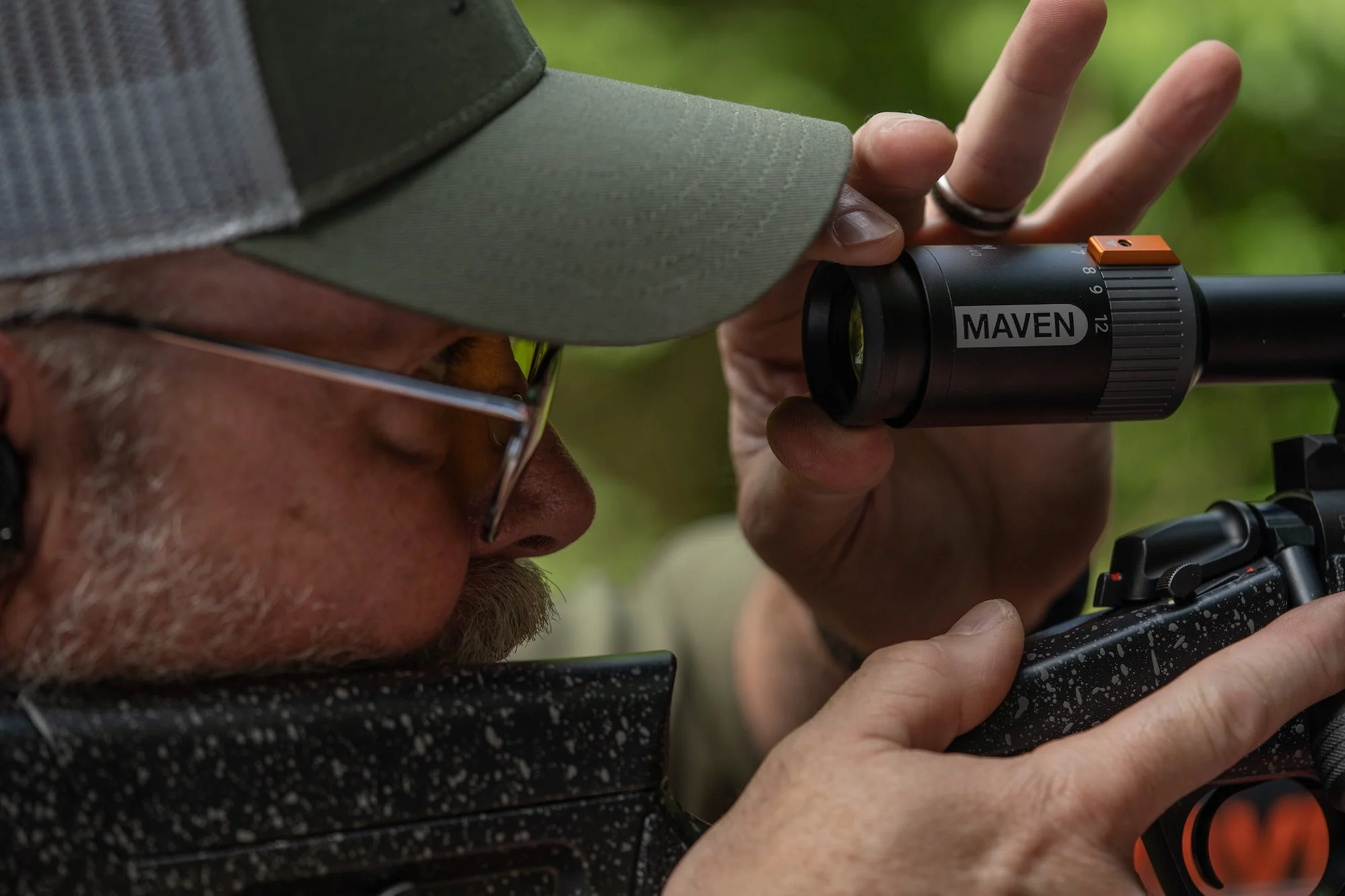
The key to effectively using a parallax adjustment is to first focus the reticle properly. Richard Mann
Once you have the reticle in focus you should not need to adjust the diopter again. This is why older riflescopes had a screw lock to turn up against the diopter adjustment locking it in place. Well, at least that’s in a perfect world. Light, atmospheric conditions, and vision issues can minimally affect focus, so under rare conditions, you might need to slightly tweak the diopter adjustment. This is why modern riflescopes have the European style, quick-adjust diopter. Most importantly, if this step is not done correctly, any other adjustments you make will essentially be the fruit of a poison tree.
2) Eliminate The Parallax
There are two options here. The first is to set the parallax adjustment to match the range to the target, and then move your head from side to side to see if you have in fact dialed all the parallax out of the system. If not, fine-tuning the parallax adjustment will do so. Target shooters typically have the right rest and enough time to go this route.
The other method is to range the target, set the parallax adjustment to the correct distance, and take the shot. In most cases you’ll have eliminated enough parallax to get your hit. For most hunting situations, this is also the best approach because time and a solid rest are in short supply in the field.
The Big Mistake Shooters Make About Parallax
The problem some shooters make is trying to correct for depth of focus by adjusting the diopter. Let’s assume you last had your parallax adjustment set for 100 yards but now you’re taking a shot at 350. Because your parallax-adjustable riflescope does not have enough depth of focus to reach from 100 to 350 yards, the image is going to appear out of focus. To correct for that you try to adjust that European-style fast-focus eyepiece because, hey, everything is out of focus, and this is the focus adjustment, right? Wrong. The problem is you can’t seem to get everything perfect. So, you get it as close as you can and then start twisting the parallax setting.
What you have in fact done is unfocused the reticle by screwing with the diopter, and you then further confuse the system by trying to find proper focus with the parallax adjustment. You might get things to look OK enough for a shot, but in the process, you’ve likely failed to dial the parallax out of the system, which can lead to a miss.
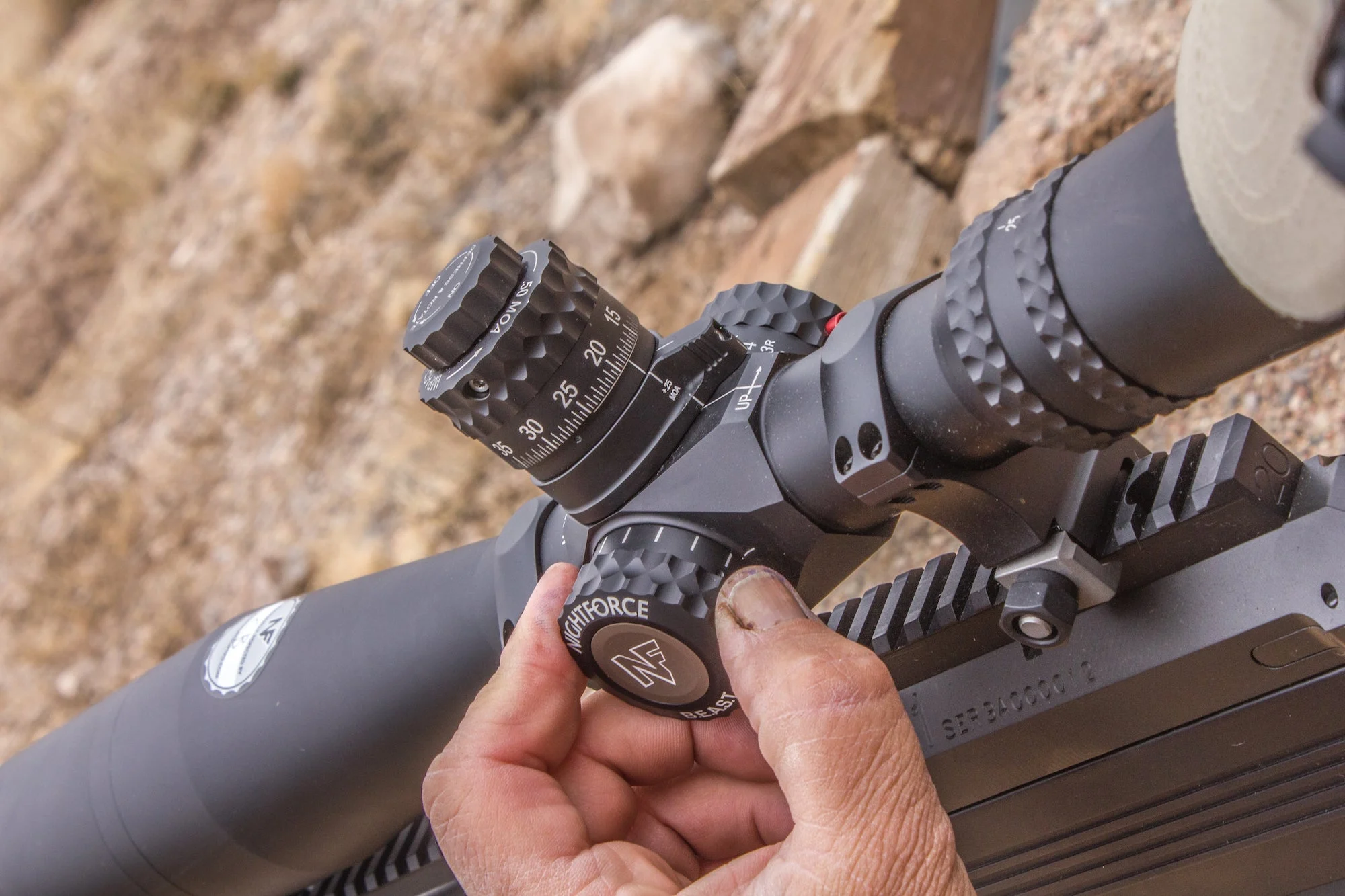
Parallax can make a big difference for target shooters. Richard Mann
Should Hunters Care About Adjustable Parallax or Not?
Why would you even want an adjustable parallax on a riflescope? For hunters, that’s a good question. Let’s go back to my 4.5-14X40 Leupold VX-3. Set parallax free at 150 yards, at double that distance (300 yards) the most parallax it can have, is equal to the diameter of the riflescope’s objective lens, which is 40mm or 1.5 inches. That means if I have my head moved as far as possible off the centerline of the riflescope, while still being able to see the reticle, the reticle is at most 1.5 inches away from where it should be. At 600 yards the most parallax I could have would be 3 inches. If I try to center my eye behind the scope, a more realistic maximum amount of parallax at 600 yards would only be 3 inches or probably less. So, why bother? There’ll not be enough parallax to matter at any distance I have any business shooting a big game animal.
Target shooters on the other hand live for precision; if they’re aiming at a half-inch dot, they want to hit that half-inch dot. Slight misalignments in eye position could easily induce enough parallax to cause a miss. And, when you’re shooting at extreme range and all the other variables that can influence a bullet’s point of impact come into play, starting a bullet off that’s already pointed an inch away from your point of aim can make a big difference.
If you’re shooting prairie dogs at long range, a parallax adjustment makes sense. But for the average big game hunter who’s only going to shoot inside 600 yards, its mostly just something else that can get in your way. For most hunters, a riflescope with a fixed parallax and a deep depth of focus is the way to go.

